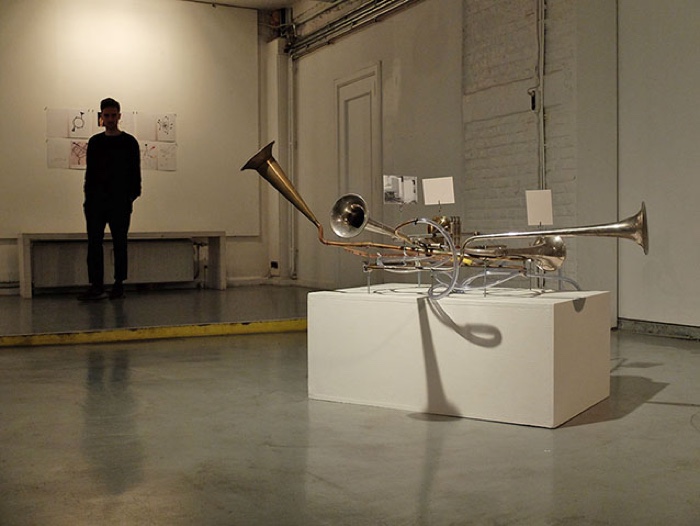
Justin Bennett, Multiplicity, 2017. Photo via Justin Bennett
If you ever find yourself in or around Brussels and are interested in art that explores technology in a meaningful way, then do visit the exhibition The State of Things 2017 at iMal, the center for digital cultures and technology.
The art center has invited Werktank and Overtoon to take over its galleries and present four installations developed by artists who work or have worked in their studios. Overtoon shows ‘Multiplicity’ by Justin Bennett and ‘Polyhedra’ by Floris Vanhoof. Werktank shows ‘The White’ by Kurt d’Haeseleer and Franck Vigroux, as well as ‘Search for the frame’ and two new site specific works by Johannes Langkamp.
Overtoon is based in Brussels and is dedicated to the research and production of sound art. Werktank is based in Leuven and produces installation art that explores the relationship between technology and perception. While the two platforms have different concerns, they both value an experimental and sensory approach to image, light and sound.
I’ve always have a soft spot for sound art so i’ll kick off my walk around the exhibition with the sound installations:
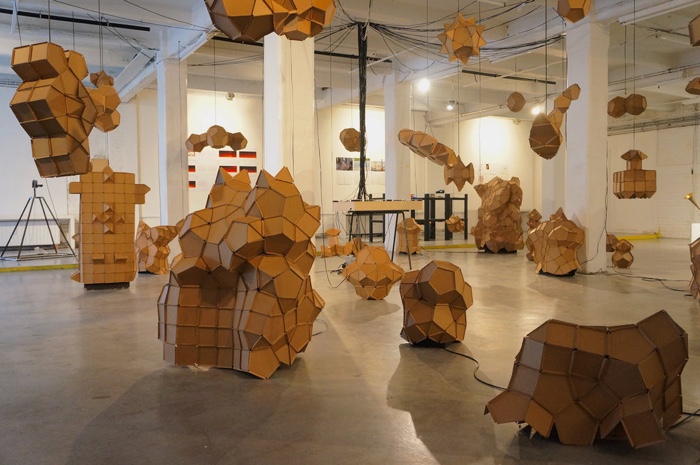
Floris Vanhoof, Polyhedra, 2017. Image courtesy of iMal
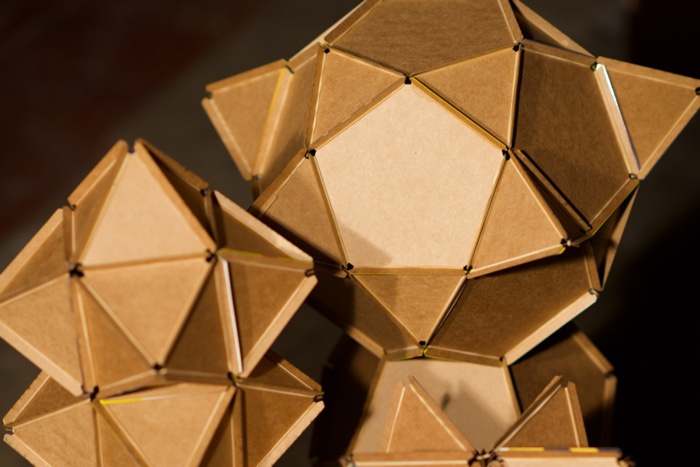
Floris Vanhoof, Polyhedra, 2017. Image courtesy of iMal
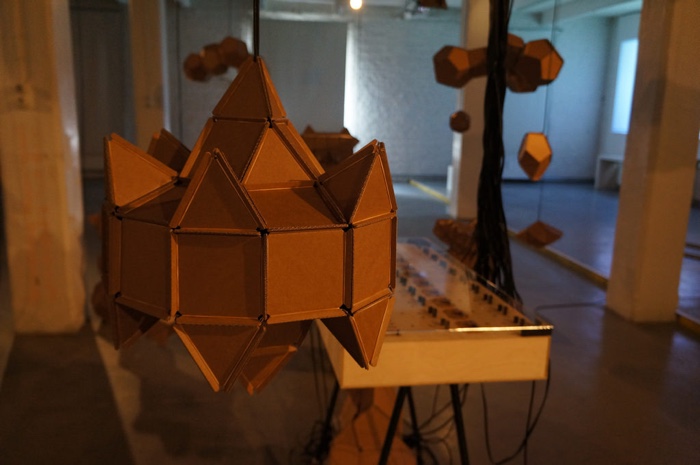
Floris Vanhoof, Polyhedra, 2017. Image courtesy of iMal
While at Overtoon, Floris Vanhoof created a symphonic orchestra composed of 40 loudspeakers of various geometrical shapes. Because they have different sizes, shapes and spatial placement, each sculpture translates sounds in a specific way. The listening experience takes on an additional visual but also sensorial dimension as you walk around and inside this cloud of speakers and discover how the natural movements in the sounds seem to morph and move from one sculpture to another.
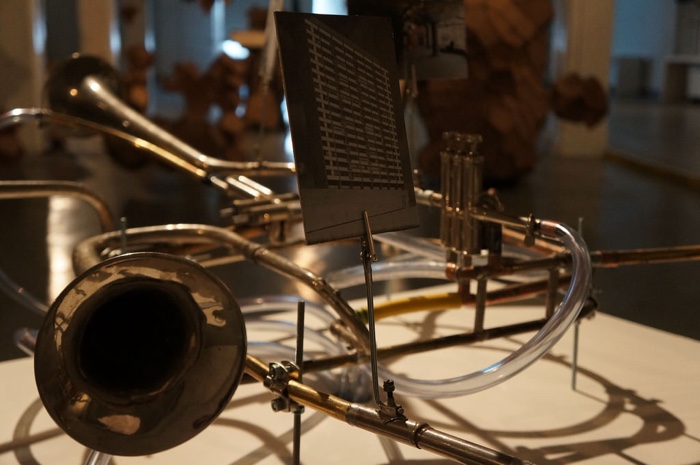
Justin Bennett, Multiplicity, 2017. Image courtesy of iMal
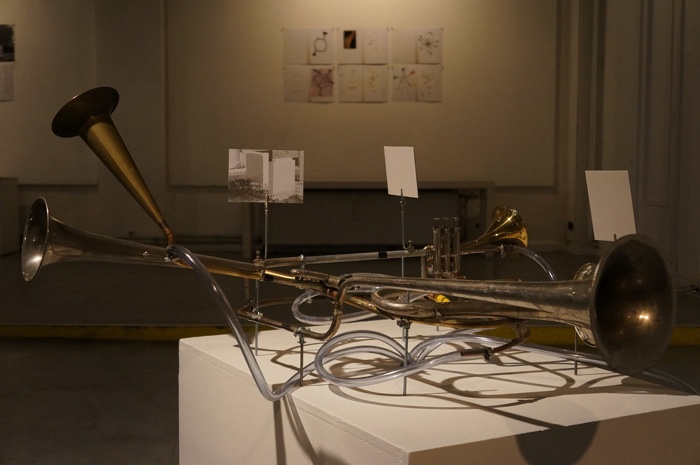
Justin Bennett, Multiplicity, 2017. Image courtesy of iMal
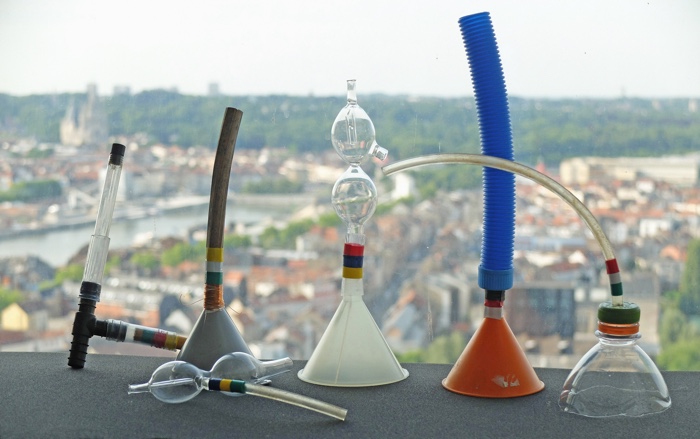
Justin Bennett, Multiplicity (Filters for listening to the city), 2017
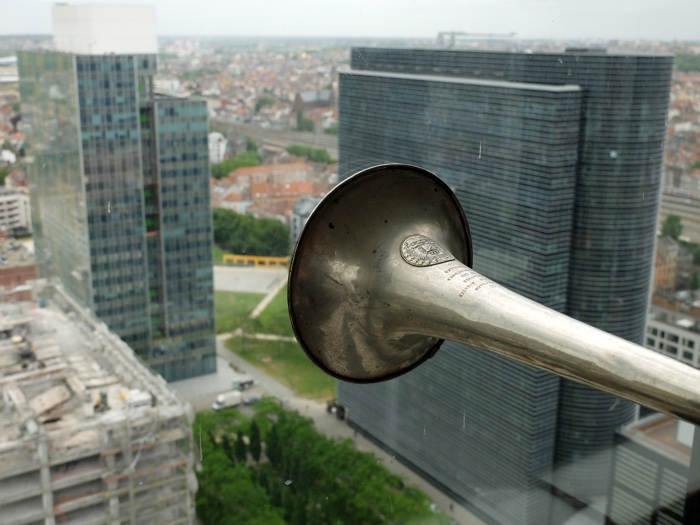
Justin Bennett, Multiplicity, 2017
During his residency at Overtoon, Justin Bennett built an array of listening devices -like a miniature microphone inside a trumpet or a wooden stethoscope- to explore the acoustic territories of Brussels. He then went on to uncover and record the voices and narratives of people, the sounds of work environments, of the fauna, of underground tunnels and passageways, etc. The artist manipulated the sounds he encountered, traced out narrative paths across the Belgian capital and explored the visual and spatial forms of the city in drawings and sculptures.
The exhibition detailed Bennett’s research into the sirens of emergency vehicles whose presence in Brussels’ soundscape increases with each terrorist threat or attack. The sound of various types of sirens and signals weaves into the urban fabric as they move through it. Bennett observed how the siren sounds bounce off the large glass facade of office buildings, giving the impression that there are several emergency vehicles instead of just one. And as the vehicle recedes into the distance, its direct noise fades out and leaves more space for its reflections which will, eventually, be covered by more powerful urban sounds.
The first result of Bennett’s research is a multi-trumpet sculptural installation that evokes the distorted and multiplied echoes produced by emergency sirens in urban space.
Kurt d’Haeseleer & Franck Vigroux, The White, 2017. Image courtesy of iMal
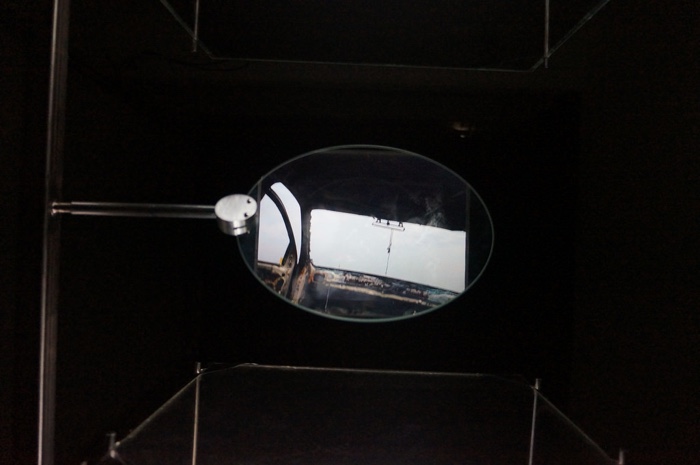
Kurt d’Haeseleer & Franck Vigroux, The White, 2017. Image courtesy of iMal
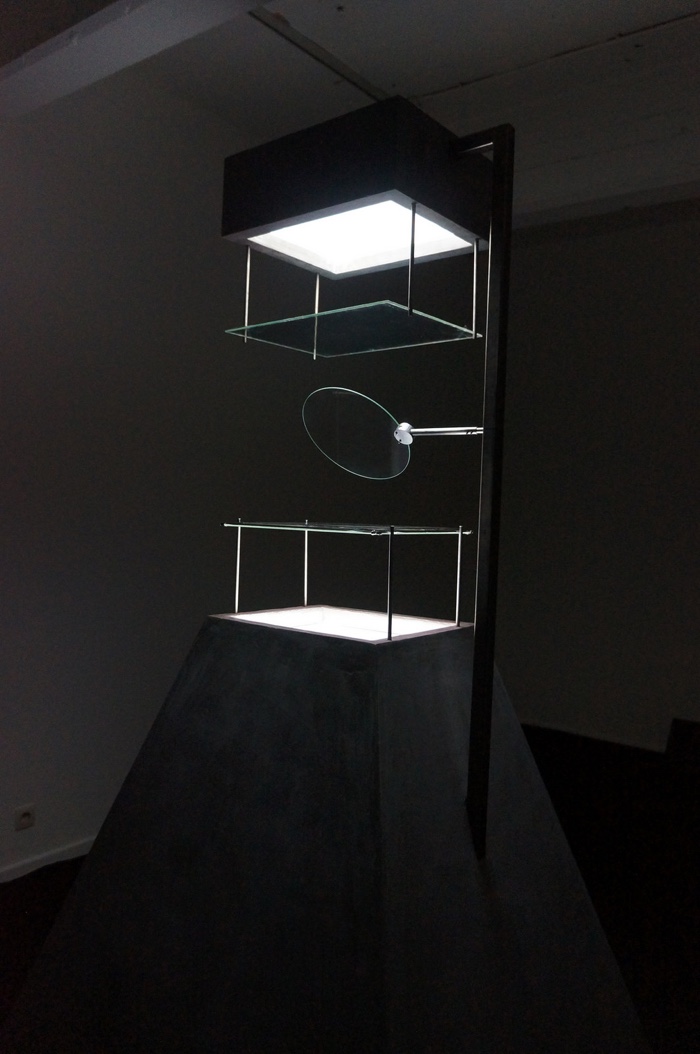
Kurt d’Haeseleer & Franck Vigroux, The White, 2017. Image courtesy of iMal
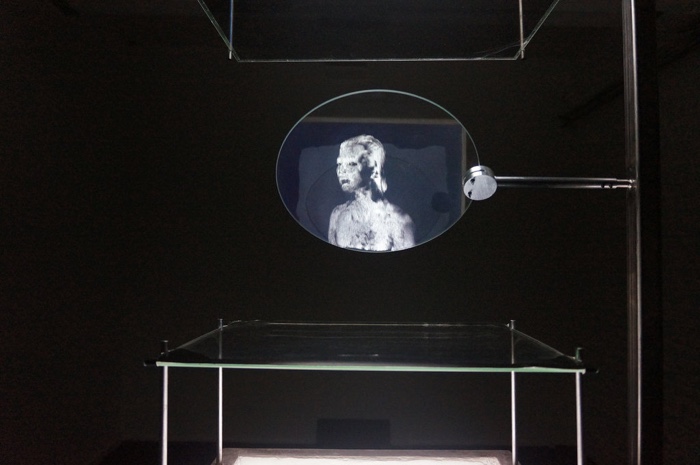
Kurt d’Haeseleer & Franck Vigroux, The White, 2017. Image courtesy of iMal
Kurt d’Haeseleer & Franck Vigroux‘s audiovisual installation recreates a technique that first appeared as a stage illusion in the mid-19th century. The Pepper’s ghost used a glass plate placed between spectators and the scene to create a ghost apparition on stage. The ghost was in fact an actor kept invisible for the public. In other cases, ghostly objects were made to ‘materialize’ then fade out of existence or to magically transform into different objects. The technique is still used nowadays in theatre, amusement parks, museums, television, and concerts. Teleprompters are a modern implementation of Pepper’s ghost. The technique was also used recently for the appearance of Tupac Shakur onstage with Dr. Dre and Snoop Dogg at the 2012 Coachella Festival and Michael Jackson at the 2014 Billboard Music Awards.
In ‘The White’, which was produced at Werktank, two white TV screens are reflected. The reflecting glass plate doesn’t show the expect white image but two eerie streams of moving images on each side of the plate.
The installation tries to poke into the dark subconscious part of our mind. It confronts us with both our fear and resistance for what is strange and unknown as our fascination and attraction to it. White, a color associated with positivity and goodness, seems to hide a more troubled and complex reality. The sensorial experience of ‘The White’ is somewhere between ecstasy and fear, like that of a child that hides his eyes from something horrible he sees, but still glimpses through his fingers to see what is happening.
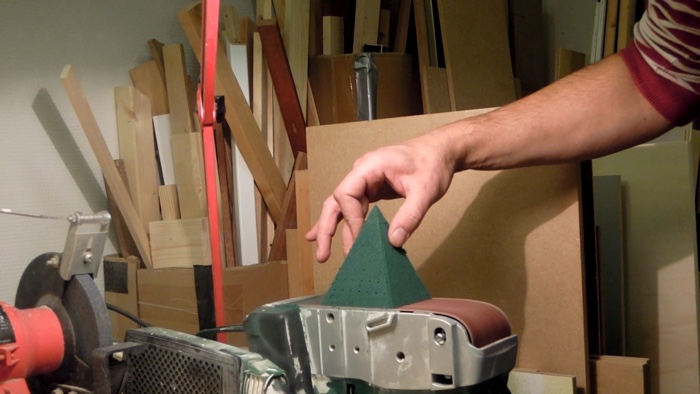
Johannes Langkamp, Search for the frame, 2011-2016
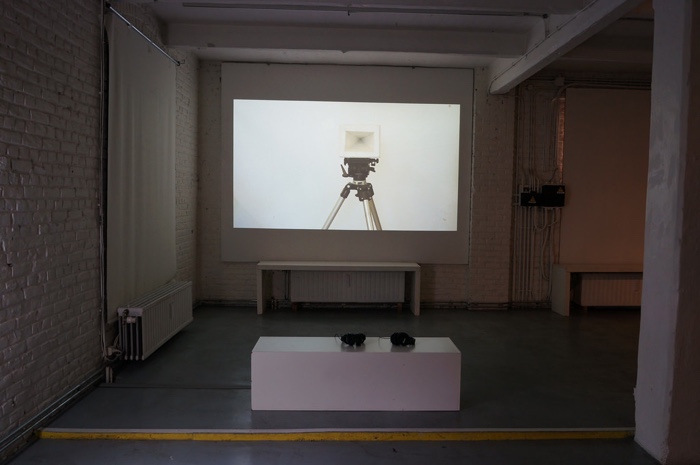
Johannes Langkamp, Pyramid of Vision, 2017. Image courtesy of iMal
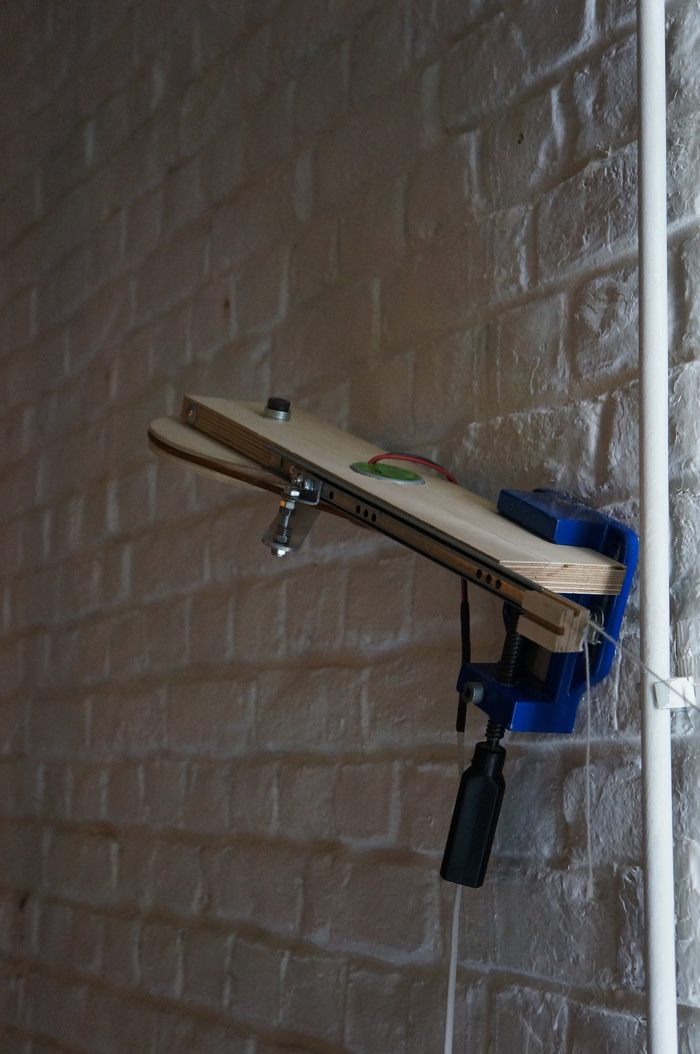
Johannes Langkamp, installation view at iMal. Image courtesy of iMal
Johannes Langkamp is fascinated by the way camera operates and the gap between reality and its representation. I think Langkamp’s research would deserves a proper interview. Until this happens, i’ll gaily copy/paste the press blurb: ‘Search for the frame’ is a selection of sixteen video sequences from Langkamp’s archive of video sketches from the past five years. The compilation is a cumulative view of his research in which he is experimenting with the possibilities of the framed look. By playing with the perspective, he shows how the camera can manipulate reality.
The artist also presents two new creations at iMAL, in which he continues his research: the video installation “Pyramid of Vision” and a spatial intervention, inspired by the location.
The State of Things 2017 is at iMal in Brussels until 15 October 2017.
Related stories: Experiments in sound and perception. An interview with Aernoudt Jacobs and Listen to the sounds from the deepest hole ever dug into the Earth crust.
